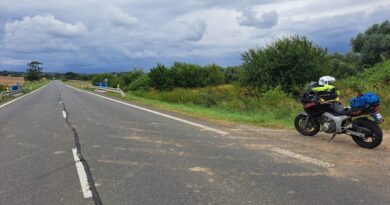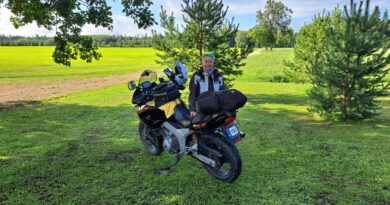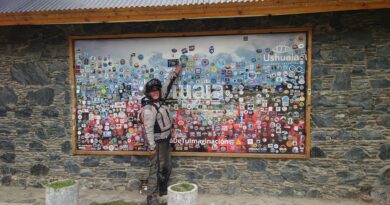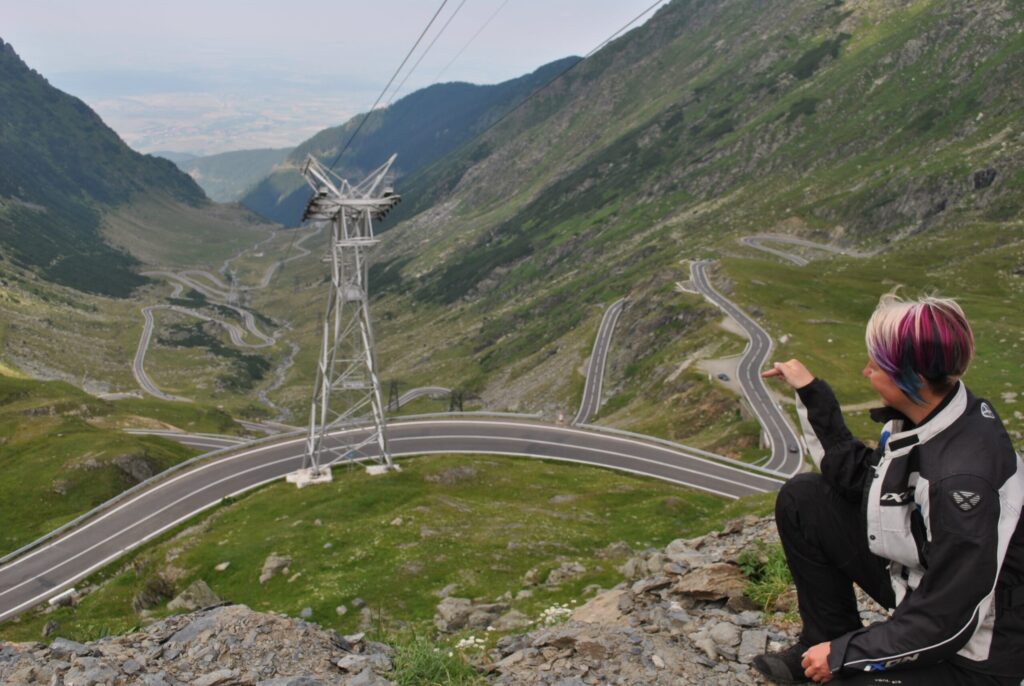
Southeastern Europe’s nature takes your breath away while riding a motorcycle.
Time and again, we couldn’t resist the inner call to pack up our essentials for a month, turn the front wheel of the motorcycle southward, and once again embark on exploring the countries, cultures, and nature of Southeastern Europe.
An adventure story from MotoMari from year 2016
Even though during our spring backpacking trip to Greece we promised ourselves to forgo our traditional motorcycle journey this year, we couldn’t keep our promise. Without any firm thoughts or plans, we set off on this journey once again.
Everything went quite routine until Slovakia tried to burn through the kilometers of Latvia, Lithuania, and Poland as quickly as possible. On the third day of the trip, around sunset, we started looking for accommodation in Slovakia but found the hotels priced at 70 and 80 euros too expensive, so as darkness fell, we continued driving. Before midnight, we had already crossed into Hungary, and navigating in unfamiliar territory in pitch darkness made it uncomfortable to search for accommodation late at night. We stopped near a resting place for truck drivers after the border to discuss our plans and have soup. In the span of an hour, neither of our tired minds could come up with a good plan, so we abandoned the idea of continuing the journey.
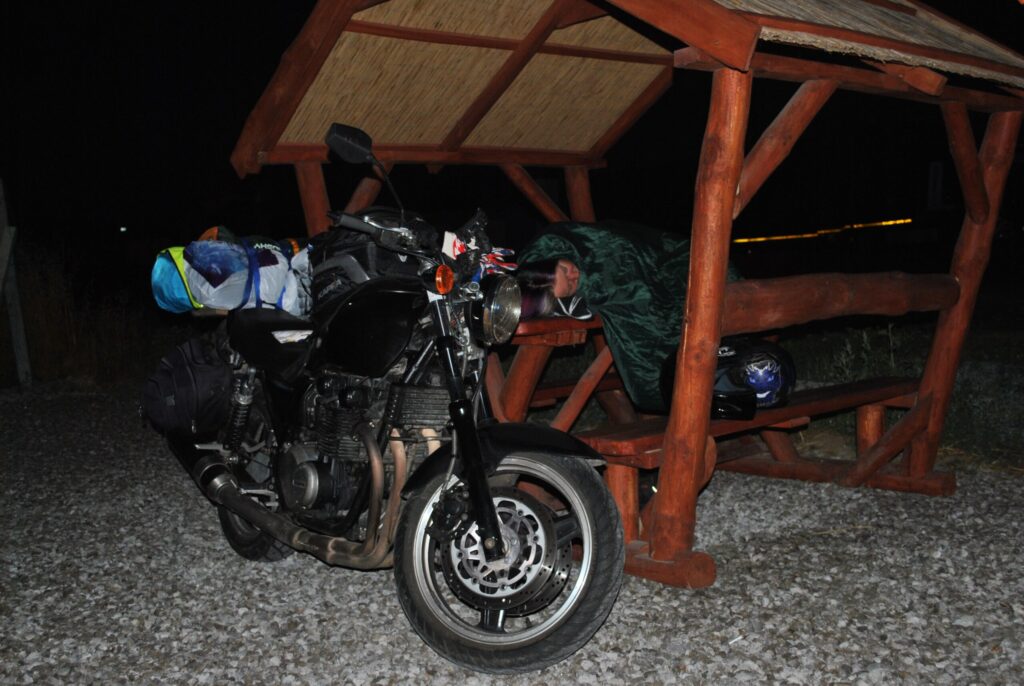
We found ourselves in Romania, found a similar lake to the Dead Sea.
We parked the motorcycle by a shelter with benches, pulled out our sleeping bags and fleece jackets from the saddlebags, and took over the dining table. After a few hours of laying on a wooden bench with our riding gear still on, sleep managed to catch up with us for a while. Until it started getting lighter outside, and through the haze of sleep, it seemed to me that something was seriously wrong. Blinking lights around us, flashes of flashlight through bleary eyes, and men in neon vests moving around. Plus, police cars. I quickly woke up my confused companion and told him urgently that we needed to get out of there – something was really wrong! After the initial panic settled, it turned out they were just trying to park a couple of long-haul trucks. With darkness fading and a little rest, we headed through Hungary towards Sibiu, Romania.
After crossing the Romanian border, the road became a real torment! We encountered red traffic lights, dug-up roads, hills, and sharp potholes for a couple hundred kilometers. In over 30-degree heat and proper riding gear, it wasn’t pleasant at all. Overcoming these challenges, we reached the climax of our nearly 600-kilometer day in Sibiu, where the Red Bull Romaniacs hard-enduro competition was taking place. It was joyful to meet several Estonians in the city and at the accommodation who had come to compete or support the event.
About fifteen kilometers from Sibiu, we discovered a mystical place called Ocna Sibiului, with several salt lakes. According to legend, these lakes formed in an abandoned salt mine, and the salt content in the lakes ranges from 260 to 310 grams per liter of water. It certainly provided a Dead Sea-like effect. The black lakes there were also fascinating, where the water was completely pitch black, opaque sludge, and upon emerging from the lake, we ourselves were covered in black. The mud at the bottom of the lake was reputedly beneficial for health, and like others, we dried off covered in black sludge by the lakeside. It was said to be very invigorating afterward, though it took some scrubbing to remove the black residue.
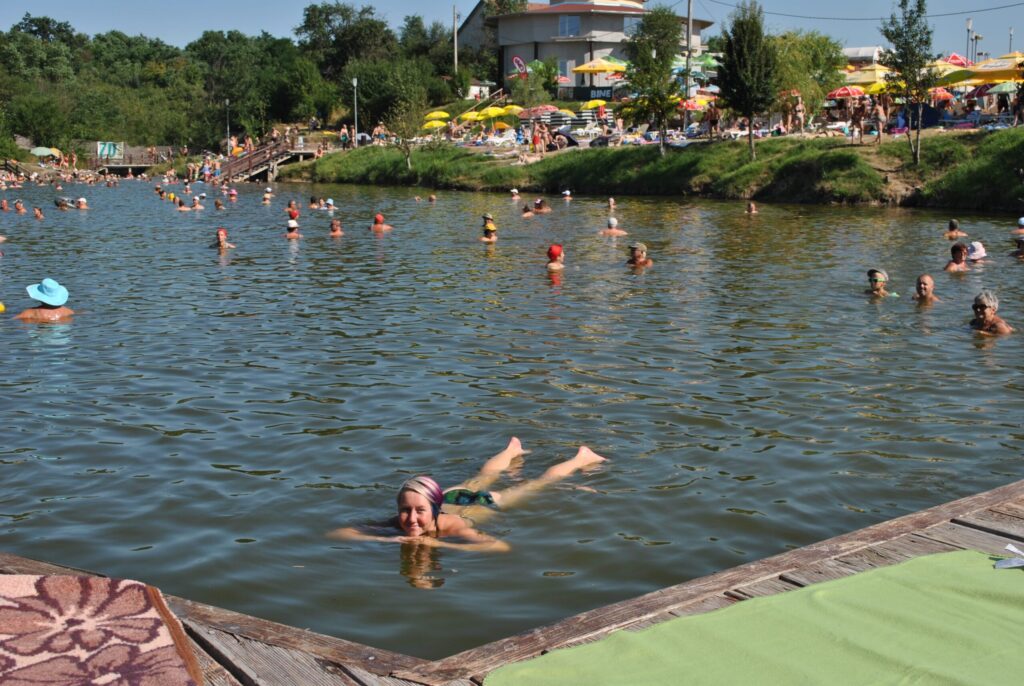
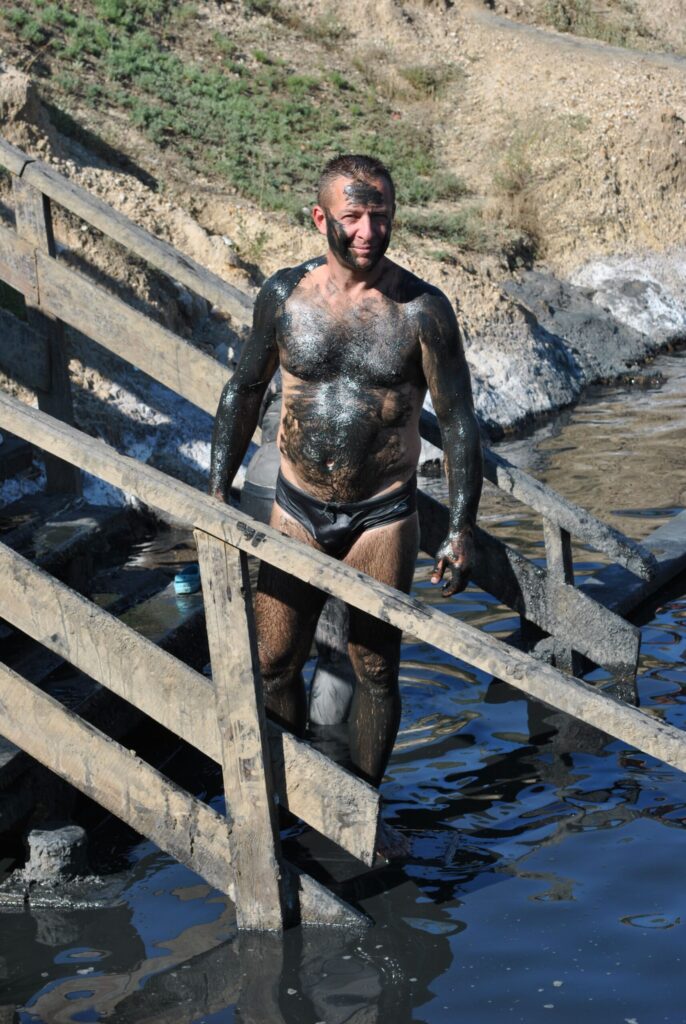
After a few days of rest in the stunning old town of Sibiu, the road led us toward Bulgaria. However, for our route, we chose the Transfagarasan, a winding road renowned for its breathtaking views. Even the TV show TopGear has recognized it as one of the world’s best roads. This remarkable road, full of hairpin turns, climbs over two kilometers high and offers stunning views of mountains, waterfalls, and sheep herds. Heading south, the road crosses over the Vidraru Lake dam, which is the ninth-largest human-made dam in the world. The dam stands 165 meters tall, spans 305 meters in length, and holds back 465 million cubic meters of water.
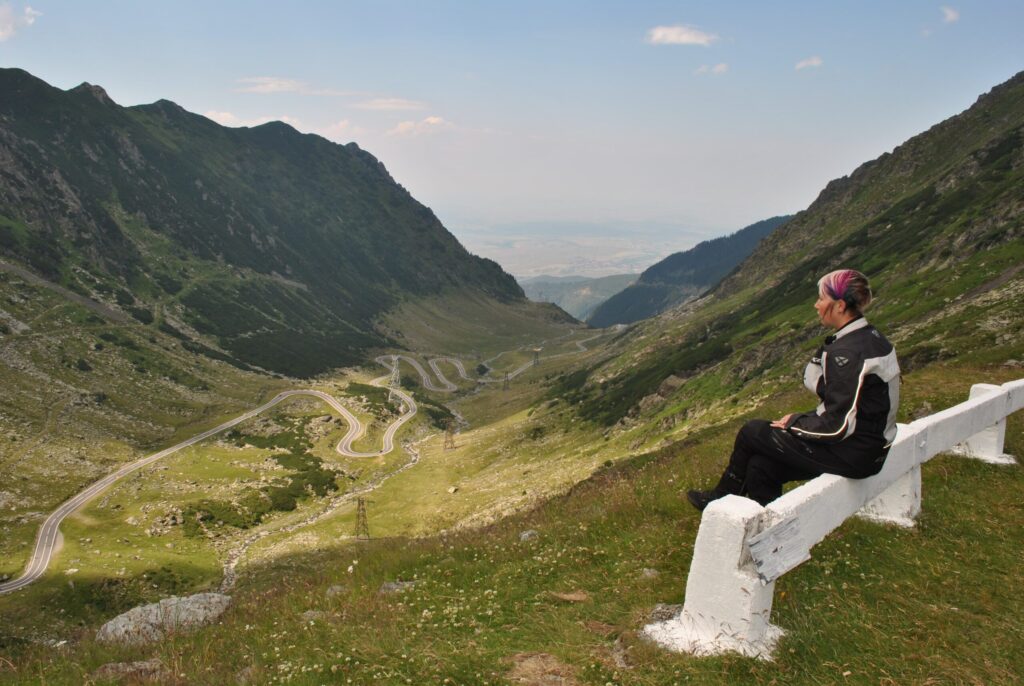
To fully enjoy and admire all of this, we spent an entire long day, and in the twilight hours, we found accommodation just before Bulgaria. At the accommodation, we met Marius, a Romanian television journalist whose main area of expertise is agriculture. Marius praised the strong development of agriculture in Romania and mentioned that Romanian politicians had recently developed European Union support measures for agriculture. “Our biggest concern, however, is the Roma – they don’t adhere to any rules and live as if in their own world,” he lamented.
No Traces of Refugee Journeys Found
The next morning, we found ourselves along the Danube River, where we spent a couple of hours waiting for the ferry to transport us across to Bulgaria. From there, our journey continued straight into Greece, to the Chalkidiki peninsula, reputed to have Greece’s most beautiful beaches. It’s hard to argue, as we allowed ourselves to enjoy these various delightful beaches and the hospitality of the locals for a full week.
For our return route, we chose countries we had not previously visited. We were also curious to travel through the routes where, according to mainstream media, thousands of refugees were passing through. We left Greece and entered Macedonia, where we made a stop at the first gas station due to GPS mount failure. A middle-aged woman, covered in a black shroud, engaged in conversation with a truck driver right in front of us. A short distance away, a younger pregnant woman, with her head and half her face covered, begged for money with several children in tow. We didn’t see any similar sights on the rest of this journey. Nor did we notice any signs of mass refugee movements or camps.
Macedonia itself welcomed us inland with intense heat and scorching temperatures. In less than 200 kilometers along the main road, unfortunately, this land gave little indication, but overall, everything seemed desolate, lifeless, and mountainous in the middle of summer.
Next, we arrived in Serbia, where even the gas station attendants gave us an indication of the friendliness of their country. The attendant inquired with great interest whether we were indeed from Estonia, as he deduced from the motorcycle’s license plate. He mentioned that he had visited Vilnius and asked what Estonia could offer to tourists. Enchanted by the splendid mountains and magnificent nature of all the countries we had traversed, I initially couldn’t suggest anything. Perhaps a trip to the marshes? He also inquired about our politics, as he had heard positive things about it, and lamented that Serbia’s political situation was not great. We also learned the Serbian word for thank you, “Hvala!” From our experience, finding common ground with locals in their language and knowing at least a few basic words is always key while traveling.
Serbia Has Snow, and Bananas Are Grown
Our goal was to cross through Serbia into Montenegro, towards the seaside. On that day, we ended up staying overnight in South Serbia, in the industrial and commercial city of Nis. At the hostel, we met Svetlana, a young administrator who stayed with us for a few hours to chat outside. If we call Svetlana Svet for short, the Serbs have the name Sveti. Our new acquaintance told us how Serbs try to cope and make a living because wages are low. “Many grow all kinds of produce in their small gardens and sell them on the highways and city streets, but prices are so low that I don’t understand why bother with practically free labor?” reasoned Svet. He added that bananas are grown in Greece, too, causing a craze in recent years where everyone is trying to grow bananas. “Even my aunt – can you imagine? It is possible to get a banana harvest in Serbia,” he said.
According to him, the climate suits, although winters are reportedly very harsh. “Mostly, it rains nasty rain and slush, but sometimes in these parts, it snows for a week or more,” he said. “The worst thing is that local authorities don’t remove the snow and say it’s not worth it because it will melt anyway. And then you try to get to work in a meter of snow; some people get trapped in snow prison for a month,” Svet said.
One burning question was also asked, for which I didn’t dare ask for an answer: Why do Serbs not recognize Kosovo? Svet became a bit agitated. “They are part of Serbia, part of our culture and history! Our ancient churches are there, and history belongs to Serbia,” he was convinced. In any case, one Serbian seemed to have a strong backbone and unshakeable yet friendly demeanor.
Serbia itself is developing. Great highways are being built throughout the country, and more are being added. Our overall impression of this country was very positive. We had prepared for worse, but the general infrastructure seemed to work there.
Crossing into Montenegro, we couldn’t say the same. After driving a little while, smoke clouds came from the mountainside. This is how waste management works: all the excess is dumped over the mountain edge and set on fire. A lot of garbage reaches the valleys and rivers from the mountains. Nature itself is, of course, breathtaking. The roads wind through high canyons, and far below, the river sparkles.
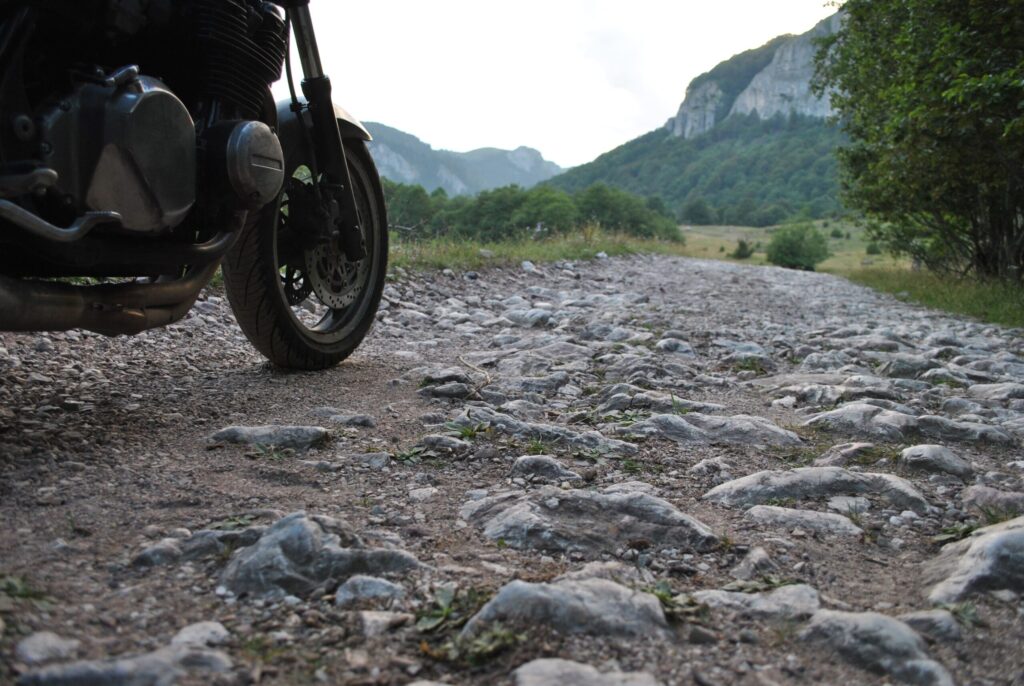
Corrupt police officers collect bribes.
Our journey home led us through Bosnia and Herzegovina for the first time in our lives. At times, driving through the picturesque landscapes on roads that varied from poor to better quality, we felt as if we were suddenly completely alone in the world. We stopped in front of a former village shop. Once a café and a store, it now hung clothes from twenty years ago, still with price tags attached. Not a soul in sight anywhere.
Life seemed a bit more present in the northern parts. In both Montenegro and Bosnia and Herzegovina, we felt that locals were trying particularly hard to squeeze every penny from tourists, as these regions rarely see tourists and earning opportunities are scarce.
In Bosnia and Herzegovina, once again, we found ourselves searching for accommodation in the dark, which doesn’t happen very often, to be honest. We stopped around nine o’clock in front of a motel. The almost asleep owner came out with a glimmer of hope in his eyes. While earlier we had seen signs along the road offering rooms for 10 or 15 euros, this owner sensed that we had no choice but to take a room and didn’t budge from his 25 euro price.
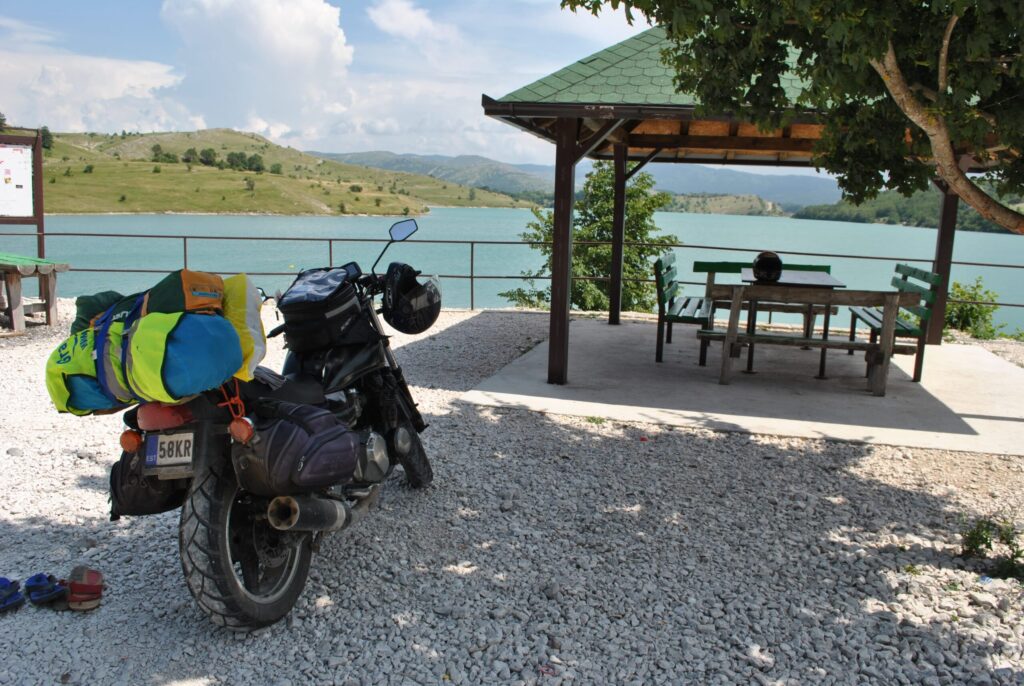
Over morning coffee, he inquired about our experiences with the police. Already in Greece, we had asked even the Serbs staying at the campsite how things were with law enforcement in their home country, and the answer was that if you get stopped, you probably have to pay. The landlord also enlightened us that things have been straightforward since the dissolution of Yugoslavia. “In Bosnia and Herzegovina, the police are still corrupt – if they stop you, you won’t get away without paying. Doesn’t matter for what, but you’ll have to pay. It’s the same situation in Montenegro. The Croatian police are completely clean and good, and in Serbia, they’re halfway through cleaning up,” explained the landlord. He also mentioned that in his home country, the police are essentially a mafia. “I run a hotel, I don’t pay taxes to the state, I pay a small fee to the police, and that officer then shares that fee with his boss, and everything’s fine with me until then,” he explained.
Along the road through the canyon, there were often signs: “Dangerous, minefield.” People live in houses that were partly destroyed during the Bosnia War: walls riddled with bullet holes, sometimes half the house bombed out, but you have to live somewhere. Nature, on the other hand, is breathtaking – in the midst of mountains and bright blue lakes with a few locals sunbathing and swimming by the shore. In any case, the former Yugoslav countries definitely deserve more exploration and understanding, each with its own culture and story to tell.
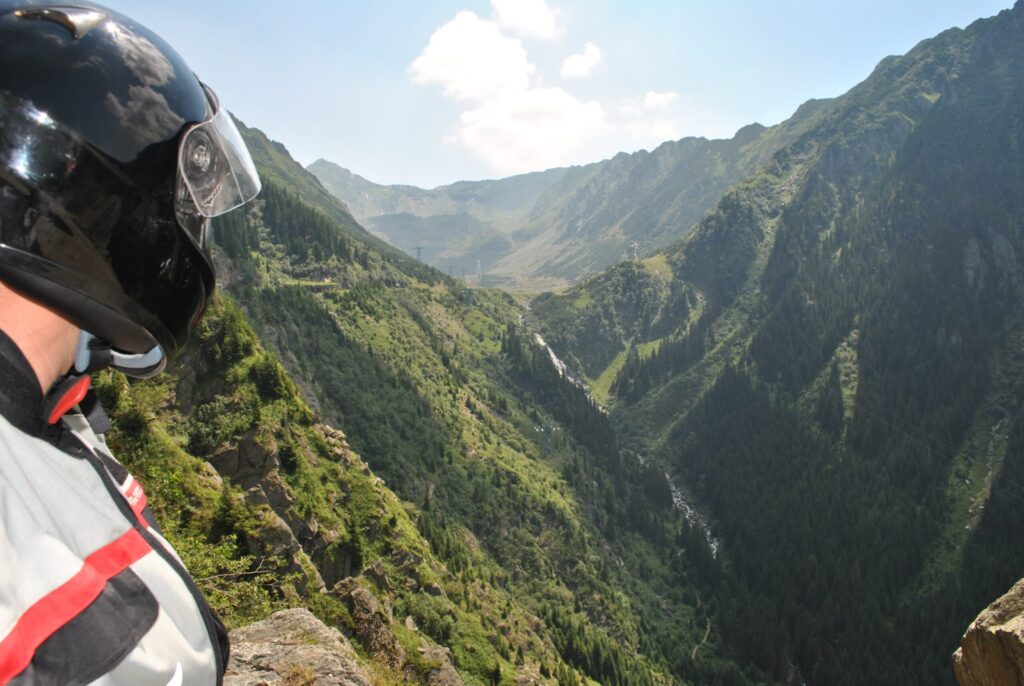
You may find more stories from MotoMari from her blog https://motomari.com/

